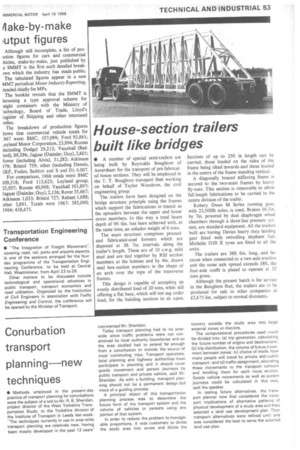Conurbation transport planning new techniques
Page 55

If you've noticed an error in this article please click here to report it so we can fix it.
• Methods employed in the present-day practice of transport planning for conurbations were the subject of a talk by Mr. R. B. Sheridan, project director of the West Yorkshire Transportation Study, to the Yorkshire division of the Institute of Transport in Leeds last week. "The techniques currently in use in area-wide transport planning are relatively new, having been mostly developed in the past 12 years" commented Mr. Sheridan.
Today transport planning had to be areawide since traffic problems were not constrained by local authority boundaries and so the area studied had to extend far enough from a conurbation to include the source of most' commuting trips, Transport operators, local planning and highway authorities must participate in planning and it should cover goods movement and person journeys by public transport and private vehicle, said Mr. Sheridan. As with a building, transport planning should not be a permanent design but more of a guiding process.
A principal object of this transportation planning process was to determine the future form of the transport system and the volume of vehicles or persons using any portion of that system.
In order to reduce the problem to manageable proportions, it was customary to divide the study area into zones and divide the country outside the study area into large external zones or districts.
The computational procedures used could be divided into: (a) trip generation, calculating the future number of origins and destinations; (b) trip distribution, the volume of future movement between zones: (c) choice of mode, how many people will travel by private and public transport : and (d) traffic assignment. allocating these movements to the transport network and totalling them for each route section. Goods vehicle movements as well as person journeys could be calculated in this way, said the speaker.
In testing future alternatives, the transport planner now first considered the transport implications of alternative patterns of physical development of a study area and then selected a land use development plan. Then transport alternatives were refined until one was considered the best to serve the selected land-use plan.








































































































































